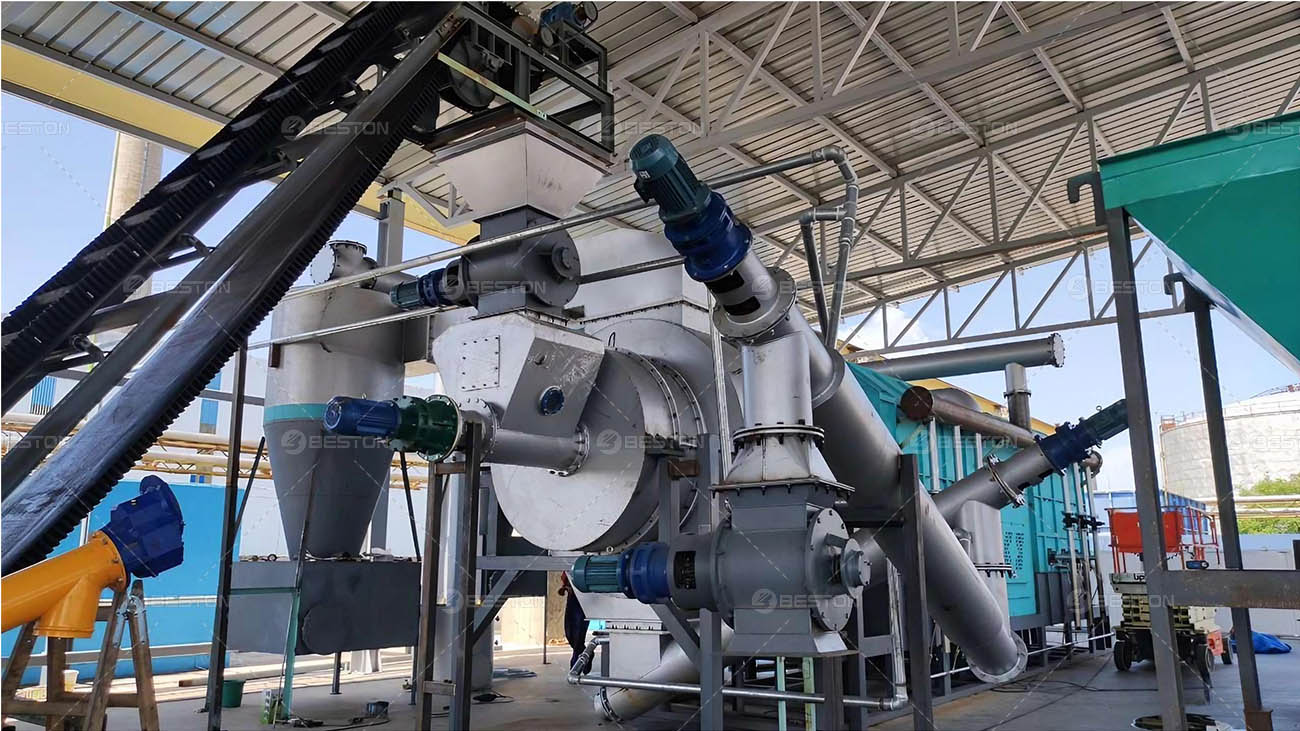In the pursuit of sustainable energy solutions, the recycling of palm kernel shells (PKS) has emerged as a promising avenue. Palm kernel shell charcoal machine is a key player in this domain, offering methods to transform PKS into valuable resources such as biomass fuel and biochar. Understanding the comparative advantages of these approaches is crucial for optimizing their utilization and impact on both economic and environmental fronts.
Biomass Fuel Production:
Palm kernel shell charcoal machine facilitates the conversion of PKS into biomass fuel through a process involving pyrolysis. This method involves heating the PKS in the absence of oxygen, leading to the decomposition of organic materials into volatile gases, bio-oil, and char.
The produced biomass fuel serves as a renewable energy source with various applications, including power generation, heating, and industrial processes. Its utilization helps reduce dependence on fossil fuels and mitigates greenhouse gas emissions.
Palm kernel shell charcoal machine employs advanced technologies to ensure efficient and environmentally friendly production of biomass fuel. By controlling factors such as temperature, heating rate, and residence time, it maximizes the yield and quality of the end product.
Biochar Production:
In contrast to biomass fuel production, biochar production focuses on the carbonization of PKS to yield a stable form of charcoal rich in carbon content. This process involves subjecting the PKS to high temperatures in a low-oxygen environment, resulting in the retention of carbon and other nutrients.
Palm kernel shell charcoal machine plays a pivotal role in biochar production by providing the necessary infrastructure and control mechanisms for optimal carbonization. Through precise temperature regulation and residence time management, it ensures the formation of high-quality biochar with enhanced properties.
Biochar holds significant potential as a soil amendment and carbon sequestration agent. When incorporated into agricultural soils, it improves soil fertility, water retention, and nutrient availability. Additionally, biochar helps mitigate climate change by sequestering carbon in the soil for extended periods, thus contributing to carbon dioxide removal from the atmosphere.

Comparative Analysis:
1. Energy Efficiency:
Both biomass fuel and biochar production methods utilize palm kernel shell charcoal machine to achieve their respective objectives. However, they differ in their energy outputs and utilization.
Biomass fuel production prioritizes the generation of energy-rich products such as bio-oil and gases, which can be directly used for heat and power generation. This process maximizes energy recovery from PKS but may result in some carbon loss during combustion.
On the other hand, biochar production focuses on preserving carbon content within the charred material for long-term storage in soil. While it yields less energy in the form of combustible gases, it offers greater potential for carbon sequestration and soil improvement.
2. Environmental Impact:
Both biomass fuel and biochar production methods have distinct environmental implications that warrant consideration.
Biomass fuel production contributes to renewable energy generation and displacement of fossil fuels, thereby reducing greenhouse gas emissions and dependence on non-renewable resources. However, it may release emissions during the combustion process, depending on the efficiency of energy conversion technologies.
Biochar production, on the other hand, offers direct carbon sequestration benefits by locking carbon in a stable form within the soil. This helps mitigate climate change by offsetting carbon dioxide emissions and enhancing soil carbon stocks. Additionally, biochar-amended soils exhibit improved resilience to drought and nutrient leaching, contributing to sustainable agriculture practices.
3. Economic Viability:
The economic viability of palm kernel shell charcoal machine-based recycling methods depends on various factors, including capital investment, operational costs, and market demand for end products.
Biomass fuel production may offer immediate economic returns through the sale of energy products such as bio-oil and char. The demand for renewable energy sources and government incentives for biomass utilization further enhance its economic feasibility.
Biochar production, while less lucrative in terms of immediate returns, holds long-term benefits for soil health and agricultural productivity. The market for biochar is steadily growing, driven by increasing awareness of its agronomic benefits and carbon sequestration potential.
4. Technological Advancements:
Advancements in palm kernel shell charcoal machine technology continue to drive innovation and efficiency improvements in both biomass fuel and biochar production methods.
In biomass fuel production, novel reactor designs and process optimization techniques aim to maximize energy yield while minimizing emissions and resource consumption. Integrated systems that combine pyrolysis with gasification or co-firing further enhance the versatility and efficiency of biomass utilization.
In biochar production, advancements focus on enhancing carbonization processes to yield biochar with tailored properties for specific applications. Innovations in reactor design, feedstock pre-treatment, and post-processing techniques contribute to the production of high-quality biochar with consistent characteristics.
Conclusion:
The comparison of biomass fuel and biochar production methods using palm kernel shell charcoal machine highlights their distinct advantages and applications in the realm of sustainable energy and resource management. While biomass fuel production offers immediate energy benefits and economic returns, biochar production holds promise for long-term carbon sequestration and soil improvement. Ultimately, the choice between these methods depends on specific objectives, market dynamics, and environmental considerations, underscoring the importance of informed decision-making in the transition towards a more sustainable future.

Comments
No comments yet. Be the first to react!